We hope that each of you, our readers, will enjoy and appreciate this article we present to you about these 5 Incredible Pacific Ocean Rays. It was our very great pleasure to compile the various information for you. May it serve to provide you with both education and increased awareness.
Certainly, these few species listed within this article represent only a portion of the similar marvels in this region. It’s our belief, though, that they nonetheless serve as excellent representations of the wonders that exist. Check out some of our other numerous articles for similar marvels.
Bluespotted Ribontail Ray
Bluespotted Ribbontail Ray Facts
- Leading off this article about these 5 Incredible Pacific Ocean Rays we presents the dazzling denizen of the depths known as the Bluespotted Ribbontail Ray.
- This marvel of Nature most frequently goes by the descriptive common name we’ve used herein for obvious reasons. Yet the wonder also has several other generally used monikers. These include such terms as the fantail ray, bluespotted lagoon ray, and bluespotted ray.
- All of these, as well as several others, actually remain simpler than the technical name for the species. That’s somewhat unusual in itself. That’s true since the beautiful creature bears the comparatively short official name in the hallowed halls of science of the Taeniura lymma.
- This marvel of Nature owes that title to the Finnish naturalist, Peter Forsskål. This individual accomplished the first recorded recognition of it as a separate and distinct species. The researcher, an apprentice of Carl Linnaeus, achieved this noteworthy act in the year 1775.
- It’s generally quite timid in terms of its relations with humans. However, it’s fully capable of delivering a serious injury to humans via its venomous tail spines. Most commonly, though, when encounters in the wild do occur, the normally inoffensive animal flees harmlessly.
- For the moment, the Bluespotted Ribbontail Ray appears to be maintaining a population base that’s both sizeable and stable. That fortunate trend also seems to hold true throughout its known range. The IUCN presently lists the fish as Least Concern on its published Red List.
- Nevertheless, the beautiful fish does presently face some potential threats to its continued existence as a species. Most of these stem directly from human activities. Habitat degradation poses a serious danger at the moment. It also faces the effects of ongoing climate change.
Bluespotted Ribbontail Ray Physical Description
The gorgeous Bluespotted Ribbontail Ray rarely fails to catch the eye of those who encounter it. The animal generally does so due to its appearance, more than sheer size. That’s because this marine wonder is a smaller than average variety of ray. Nature packed a lot of wonder in, though.
Like many of the fauna found around the world, this amazing creature displays a minor degree of sexual dimorphism. In the case of this species, that physiological trait manifests itself in terms or pure physical measurements. As a general rule, females grow slightly smaller than males.
Apart from that, individuals of both genders remain virtually indistinguishable to the untrained eye. The disk of mature adults reaches an average 14 in (35 cm) across. This also attains an average length measuring roughly 31 in (80 cm). A typical weight equals approximately 11 lb (5 kg).
In addition to the oval disk, the snout develops as relatively broad and angular. The eyes of the animal develop as relatively large and protruding. The pelvic fins of the impressive fish appear angular and somewhat narrow. Both jaws develop as lined with small but numerous teeth.
The tail of the visually stunning Bluespotted Ribbontail Ray also serves to make it easily distinguishable. This appendage usually reaches a length roughly equal to half again that of the body itself. It also generally possesses either one or two venomous, serrated spines behind the base.
But its the coloring of the impressive creature that usually receives the most attention. It’s also the source of the common name. The skin is smooth, with a background color that ranges from green to yellowish brown. Many rounded, neon-blue dots of various sizes cover most of the body.
- Kingdom: Animalia
- Phylum: Chordata
- Class: Chondrichthyes
- Order: Myliobatiformes
- Family: Dasyatidae
- Genus: Taeniura
- Species: T. lymma
Bluespotted Ribbontail Ray Distribution, Habitat, and Ecology
The stunning Bluespotted Ribbontail Ray evolved as indigenous to a region of the globe that’s somewhat unique in its nature. That’s true since that area is simultaneously relatively broad but limited. The wonder’s overall zone of habitation comprises most of the greater Indo-Pacific Region.
That intriguing territorial area begins in the waters of South Africa, in Africa. From there, though, it also extends through the Arabian Peninsula to Southeast Asia. In the Pacific Ocean, this wonder appears from the Philippines to northern Australia, and as far east as the Solomon Islands.
That’s the broader range for the creature. Within that greater area, however, its choice of habitat sharply reduces its area of coverage. That’s because it makes its home almost exclusively in areas close to the shore. The beautiful ray rarely appears at depths greater than 100 ft (30.5 m).
It’s also evolved as a primarily bottom-dwelling variety of ray. The intriguing fish most often frequents areas comprised of either sections of coral reef or nearby sandy flats. Some few individuals occasionally appear in regions formed of seagrass beds, tidal pools, and intertidal zones.
The Bluespotted Ribbontail Ray additionally developed as a mainly nocturnal species. Most observed specimens spend the great majority of the day hiding in caves, or under coral reefs, and even shipwrecks. It usually gathers in small groups at night, in shallow areas, to begin feeding.
It principally consumes various types of small molluscs, shrimps, crabs, and worms. These it deftly digs up from the ocean floor. The remarkable animal also feeds on numerous small fish species. In turn, its own predators mostly consist of bottlenose dolphins and hammerhead sharks.
Spinetail mobula
Spinetail mobula Facts
- Next up in this compendium of 5 Incredible Pacific Ocean Rays comes the intriguing product of evolution named the Spinetail mobula.
- This majestic denizen of the marine waters of the world remains best known by this common name across its range. Yet the fish has several other titles it’s known by, too. They include such intriguing monikers as the Japanese mobula ray and the spinetail devil ray.
- Inside of the scientific community, however, it’s generally somewhat better known by its purely technical title. Thankfully, that’s currently a relatively simple term for the layperson to pronounce. That’s because the amazing species holds the official name of Mobula japanica.
- It received that title due to the combined efforts of two German researchers. Johannes Peter Müller and Friedrich Gustav Jakob Henle recorded the first recognition of it as a separate and distinct species. They accomplished this scientifically noteworthy feat in the year 1841.
- Fortunately, the impressive Spinetail mobula possesses a population base that’s both stable and sufficient. That pleasant situation seems to also hold true throughout the entirety of its range. The IUCN thus currently lists it as Least Concern on its Red List of Threatened Species.
- The remarkable animal nevertheless faces several potential threats to its continued existence as a species, at least. Like many creatures, most of these stem from the actions of mankind. They include accidental bycatch, habitat degradation, and the effects of climate change.
Spinetail mobula Physical Description
The intriguing Spinetail mobula represents one of those creations of Nature that garner appreciation from those who encounter it for a variety of reasons. That’s true since this remarkable fish possesses impressive attributes pertaining to not only its beauty, but its sheer physical dimensions, too.
The srtunning ray also distinguishes itself from many other creatures around the world in a very specific way. That’s because, unlike many of earth’s species, this animal displays no noticeable amount of the physiological trait of sexual dimorphism in terms of either size of appearance.
Individuals of both the sexes therefore present the same general outward phsyical characteristics. Both genders attain an average disk width equaling approximately 7.6 ft (2.3 m). Exceptional specimens do sometimes occur, however. The disks of these may reach up to 10 ft (3.1 m) wide.
Like most of its kindred around the world, the animal has a highly flattened body shape. It also has relatively large pectoral fins extending from either side of the disk. It further displays a second pair of smaller fins at the front of the body. These are actually an extension of the other fins.
The fascinating Spinetail mobula also displays a truly captivating pattern of coloring. The upperside of the animal’s body shows a deep bluish mauve shade. A single large black band extends from eye to eye. The underside, though, shows white. The smaller fins display slivery gray with black tips.
This wonder also varies in appearance from other large rays in several other ways. It displays a white-tipped dorsal fin, as well as an obvious spine, placed between the base of the dorsal fin and the start of the tail. That tail itself also typically reaches a greater length than in most rays.
- Kingdom: Animalia
- Phylum: Chordata
- Class: Chondrichthyes
- Order: Myliobatiformes
- Family: Mobulidae
- Genus: Mobula
- Species: M. japonica
Spinetail mobula Distribution, Habitat, and Ecology
The beautiful Spinetail mobula evolved as native to a comparatively large expanse of the marine regions of the surface of the earth. While the full extent of that zone of habitation might not surprise many of you, the precise location of its endemic territory just might do so for some.
That’s due to the fact that this marvel of Nature and evolution developed as native to most of the tropical and sub-tropical waters of eastern Atlantic Ocean and the Indo-Pacific Ocean. It’s also present in such connected regions as the Gulf of California, in Mexico, in North America.
This impressive natural wonder also evolved as extremely flexible in its choice of habitat. This results in it being found in an extraordinarily wide range of locations within its greater overall range. The only basic underlying requirements appear to be water temperature and salinity.
The fascinating variety of fish most typically lives in regions quite close to shore, almost to the shoreline, for one. Yet it also appears significantly further out to sea, in the vastly deeper areas. There, it’s spotted equally as often at great depths and at or near the surface of the ocean.
The Spinetail mobula further displays flexibility in its social habits. Most specimens choose to live both as a solitary individual and in groups of varying sizes. Researchers still know extremely little about its mating habits. It’s an ovoviviparous species, though, giving birth to live young.
It’s feeds as a filter feeder, with its principal food consisting of quantities of zooplankton. These it consumes via a filtering process. Its predators remain undetermined, but likely include such animals as larger sharks and Orcas. It’s lifepan is also unknown, but thought to be around 15 years.
Giant Manta Ray
Giant Manta Ray Facts
- Our next choice for inclusion in this gathering on these 5 Incredible Pacific Ocean Rays truly stands out from the crowd, the Giant Manta Ray.
- Perhaps most notably, the surprising animal typically known by the common title listed in this article remains quite aptly named. This holds true due to the impressive fact that it presently constitutes the largest variety of ray known to exist anywhere on the planet.
- The supremely impressive animal also sometimes goes by the alternate common name of the Giant oceanic manta ray in parts of its range. Its scientific name, meanwhile, remains that of Mobula birostris. By any name, though, it remains a truly remarkable work of Nature.
- The breathtaking species also lists as a member of the Mobulidae Family, in scientific classification. Prior to the year 2017, though, scientists placed it within the genus Manta. Newer DNA testing, however, placed it in the genus Mobula. It therefore received a new name.
- For the moment, the IUCN lists the magnificent Giant Manta Ray as Vulnerable. This rating appears on the organizations’ published Red List of Threatened Species. This highly lamentable ranking further occurs partly due to an notably wide variety of factors, unfortunately.
- These reasons for its situation currently include a recent increase of its targeting in commercial fishing practices, largely due to a rise in its popularity in traditional Chinese medicine. Accidental bycatch also continues to represent a further danger to the magnificent animal.
- This holds true due to the fact that this practice frequently traps large numbers of the amazing species. However, the powerful creature also now faces the same threat all species around the world are dealing with. That’s the ongoing and still escalating threat of climate change.
Giant Manta Ray Physical Description
The Giant Manta Ray, like many species around the world, displays a moderate degree of the trait of sexual dimorphism. In the case of this creature, that characteristic presents itself in terms of physical size. That holds true because females of the species tend to be slightly larger.
The female of the species reaches an average span of about 18 – 22.3 ft (5.5 – 6.8 m). The somewhat smaller male attains an average span of roughly 17 – 20 ft (5.2 – 6.1 m). An average weight for both genders remains approximately the same, however. This equals roughly 3,527 lb (1,600 kg).
Yet, exceptional individuals of both genders do occasionally attain a significantly greater size. In fact, one specimen in particular measured 29.9 ft (9.1 m) across the wings. Regardless of size, however, both genders have the same shape. That consists of a flattened, roughly triangular form.
The Giant Manta Ray also possesses smaller fins positioned relatively near the head. These the creature typically keeps rolled up while swimming, though. This intriguing species actually evolved 18 rows of small teeth. The eyes, meanwhile, remain small and sit on the side of the head.
The tail of this wonder of Nature and evolution also grows comparatively long, as well as extremely slender in shape. The upper body of the species most commonly manifests as either black or steely blue. The underbelly of the animal, though, generally displays an off-white to grayish color.
- Kingdom: Animalia
- Phylum: Chordata
- Class: Chondrichthyes
- Order: Myliobatiformes
- Family: Mobulidae
- Genus: Mobula
- Species: M. birostris
Giant Manta Ray Distribution, Habitat, and Ecology
Astoundingly, the Giant Manta Ray possesses an almost global pattern of distribution. That’s because the gorgeous species inhabits nearly all temperate and tropical waters throughout the world. To the north, it appears as far as both coast of the United States, in North America.
In the other Hemisphere, though, this marine wonder appears as far south as both South Africa and New Zealand. Its exact environment, however, appears to vary quite significantly. That’s because some stay closer to shore, while the majority prefer to inhabit areas further out to sea.
However, in all regions in which it appears, the fabulous animal apparently prefers to inhabit markedly shallower waters. In fact, it rarely appears at depths exceeding 394 ft ( 120 m). This fact also separates it from most related of its related species, which prefer greater depths.
The magnificent ly evolved fish also evolved an extraordinary inter-dependency with several varieties of fish known as cleaners. These the ray approaches, and then stays motionless for several minutes. While it does, the cleaners consume the external parasites from the skin of the creature.
It also evolved as a variety of filter feeder by nature. In its case, the animal preys almost exclusively on zooplankton. These the animal strains through its rows of teeth. It also feeds by swimming in vertical loops. This pattern developed as a means of keeping its prey within easy reach.
Most commonly, the attention-grabbing Giant Manta Ray appears to prefer to live a primarily solitary life. On some occasions, thugh, individuals nevertheless group together temporarily. When this happens, members of the species band together in groups of as many as 50 individuals.
Reef Manta Ray
Reef Manta Ray Facts
- Now appearing in this listing of 5 Incredible Pacific Ocean Rays we present the impressive work of evolution named the Reef Manta Ray.
- This magnificent ocean creature is most frequently referred to by its reasonably descriptive common name, that of the one applied here. Scientists, however, typically refer to this marvel of Nature by its relatively simple scientific name. That’s the short term Mobula alfredi.
- Regardless of the name one chooses to use to refer to it, though, the amazing fish remains a fascinating species. That’s partly due to the fact that it presently constitutes the second-largest of all known rays. Only the aptly-named Giant Manta Ray surpasses it in sheer size.
- That status could change in the foreseeable future, however That’s because evidence leads some researchers to believe a presently unrecognized and even larger species potentially exists somewhere in the Caribbean. For the moment, though, its status remains unaltered.
- The first official scientific recognition of the animal as a separate and distinct species took place in the year 1868. One of the first, and in some minds greatest, of the zoologists of Australia, Johann Ludwig (Louis) Gerard Krefft, holds that particular distinction.
- Sadly, however, the population numbers of the Reef Manta Ray have plummeted in recent decades, due to overfishing. The IUCN, thus currently lists this marine marvel as Vulnerable. That status appears on the organization’s published Red List of Threatened Species.
- An ongoing threat to its continued existence is that of its popularity as a source of ingedients in traditional Chinese medicine. It must also, however, now be considered to be facing the same threat as other many species found around the world, that of ongoing climate change.
Reef Manta Ray Physical Description
Sheer size isn’t the only reason the remarkable Reef Manta Ray impresses the viewer, to be sure. That characteristic nevertheless bears mentioning in any discussion of the creature. It must be pointed out, however, that the observed sizes of noted individuals vary quite significantly.
That holds true due to the fact that, like many species around the world, this wonder of Nature displays only a moderate degree of the physiological characteristic of sexual dimorphism. In its specific case, though, that biological trait manifests itself only in terms of sheer physical size.
More specifically, females of this marvel tend to be slightly larger than the males of the species. The average width of adult females measures roughly 12.8 ft (3.9 m). The width of mature males, meanwhile, usually reaches the somewhat smaller measurement of roughly 9.8 ft (3.0 m).
Exceptional specimens of this marvelous ocean creature do occasionally occur, nonetheless, regardless of gender. To date, the largest reliably recorded width for a member of this remarkable species is 18 ft (5.5 m). But the vast majority of recorded specimens hold true to the average sizes.
In both sexes, however, the central disk of the body typically develops as around twice as long as it measures wide. The protruding pectoral fins serve to provide the animal with the distinctive wing-like shape. The animal also possesses a moderately long, and relatively slender, tail.
In coloring, individuals of the marvelous Reef Manta Ray generally displays a midnight blue to dark black coloring on the upper surface. It also shows a few whitish to grayish spots on the head. The underside of the extraordinary fish usually shows an off-white shade, with some dark spots.
- Kingdom: Animalia
- Phylum: Chordata
- Class: Chondrichthyes
- Order: Myliobatiformes
- Family: Mobulidae
- Genus: Mobula
- Species: M. alfredi
Reef Manta Ray Distribution, Habitat, and Ecology
Fortunately, both for the dazzling Reef Manta Ray, and for those of us who appreciate Nature, this wonder of evolution inhabits a relatively broad expanse of the globe. That’s because the impressive fish mainly inhabits fairly large parts of both the Indian Ocean and the Pacific Ocean.
A few scattered individuals, furthermore, also appear in the Atlantic Ocean. While such sightings there do occur, they remain rare and widely scattered. The majority of sightings happen off the coasts of Australia, South Africa, Japan, Hawaii, Thailand, and in sections of the Red Sea.
Wherever the captivating animal appears, though, it displays decidedly clear preferences in terms of its choice of habitat. The great majority of individuals make their home close to shore. In point of fact, they’re quite frequently observed swimming no more than a few miles from shore.
This pattern of behavior also holds true whether the individual or group appears in tropical or subtropical latitudes. Even there, however, it shows markedly clear favoritism. Due to those preferences, it’s most commonly spotted close to rocky reefs or coral, in either bays or atolls.
As a general principle, the mesmerizing Reef Manta Ray lives a solitary life. Exceptions to this tendency nonetheless do exist, however. Along with meeting for mating purposes, individuals often band together when feeding. That feeding also most frequently occurs during the afternoon.
Like related species around the world, this creature evolved as a filter feeder. It therefore filters sea water to consume large quantities of zooplankton. The species evolved as ovoviviparous, with gestation lasting 12 – 13 months. A typical lifespan, meanwhile, appears to be around 50 years.
Porcupine Ray
Porcupine Ray Facts
- Closing out this compilation of these 5 Incredible Pacific Ocean Rays is the the fabulous creature best known by the title of Porcupine Ray.
- Perhaps most notably, the remarkable and fascinating product of Nature qualifies as an extremely rare species of ray. In point of fact, this fabulous creature also currently remains the only known member of its genus. Few species known to man can make such a claim.
- Among professional researchers, however, the fascinating animal remains best known by its official, scientific name, That, though, remains the extremely hard to pronounce technical term of Urogymnus asperrimus. By either name, though, it’s a remarkable work of Nature.
- But, this intriguing ocean animal does not remain well-known just for that single reason alone, impressive though it may be. That holds true for a very good reason, in fact. This occurs due to the fact that the intriguing animal also remains unique in a wide variety of other ways.
- For one thing, unlike many related species, the stunning Porcupine Ray typically remains quite calm and sedate in its actions. This is easily evidenced by the fact that individuals remain extremely placid. As a result of this behavior, many often tolerate the approach of divers.
- Unfortunately, however, the population of this amazing species appear to be dwindling. Even worse, this marvel of Nature does not yet enjoy any protection under the law. Understandably, therefore, given these factors the IUCN presently lists it as Vulnerable on its Red List.
Porcupine Ray Physical Description
The dazzling Porcupine Ray remains an extremely large variety of ray, though by no means the largest of them all. That’s because the animal attains an average body size of 3.9 ft (1.2 m) across. Exceptional individuals exceed this significantly, sometimes measuring up to 4.9 ft (1.5 m).
The coloring varies significantly between individuals, and typically consists of various shades of either gray or brown. The eyes further develop quite small, and appear placed comparatively close together. The area surrounding the mouth also develops as heavily covered by papillae.
Perhaps most markedly of all, it remains famous, or perhaps notorious, for its numerous thorny projections. These physical features cover most of the body. However, these attributes evolved to serve a purpose. That holds true due to the fact that these actually form a defense mechanism.
One more evolutionary feature further distinguishes the aptly-named Porcupine Ray from other rays more than any of the one’s previously mentioned. As it turns out, this particular type of ray intriguingly represents the only member of its Family that does not possess a venomous spine.
- Kingdom: Animalia
- Phylum: Chordata
- Class: Chondrichthyes
- Order: Myliobatiformes
- Family: Dasyatidae
- Genus: Urogymnus
- Species: U. asperrimus
Porcupine Ray Distribution, Habitat, and Ecology
The magnificent Porcupine Ray also possesses another factor in its favor. That’s the fact that it inhabits a range that extends across a wide territory range, even though the population density remains sparse. That’s because part of its endemic range includes the Indian and Pacific Oceans.
The remarkable marine creature also inhabits portions of the Mediterranean Sea and the Atlantic Ocean. Within that range, this marvel of Nature predominantly lives as a bottom-dweller. The amazing fish also prefers to inhabit shallow water areas of coral, sandy bottom, or seagrass.
In keeping with this demlonstrable habitat preference, individuals of the species rarely live at depths that exceed 100 ft (30 m). Wherever individuals make their presence known, though, all exhibit the same general behavioral patterns. That fact includes dietary prefrences, among many others.
The diet of this variety of ray primarily consists of a broad variety of comparatively small bony fishes. Yet, it also dines on various forms of small invertebrates native to its specific habitat region. This mostly includes crustaceans and sea worms. These it typically digs out from the ocean floor.
Habitat degradation, primarily due to coastal development, also appears to currently constitute the leading threat to the Porcupine Ray. Nevertheless, certain other factors threaten it’s existence as well. In this, at least, the animal mirrors the situation of countless other marine species.
High on any such list of threats to the existence of the Porcupine Ray appears the factor of continued commercial fishing practices. Multiple coastal fisheries often unintentionally catch this species during their activities. Given its already precarious position, this poses a severe threat.
5 Incredible Pacific Ocean Rays
We sincerely hope that each of you thoroughly enjoyed reading, and hopefully learning from, this article we’ve written about these 5 Incredible Pacific Ocean Rays. It’s also our hope that doing so has left you with either a new or renewed appreciation for such remarkable wonders of Nature.
Unfortunately, however, many of their kindred around the world now find themselves facing strong threats to their continued existence as a species. Many of those dangers, in fact, stem from the ongoing actions of mankind. We must do all we can to protect and preserve them all.
Check out our other articles on 5 Wonderful Mammals of Washington, Africa’s Many Geological Masterpieces, 3 Marvelous Mantises of Europe, The Mighty Tornado, 4 Delightful Desert Plants

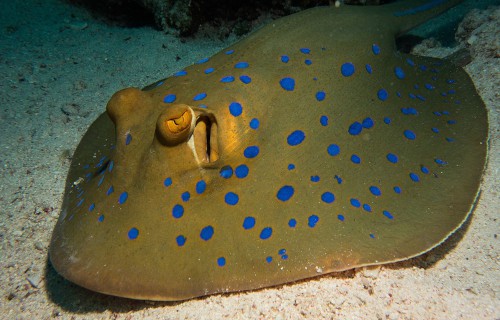
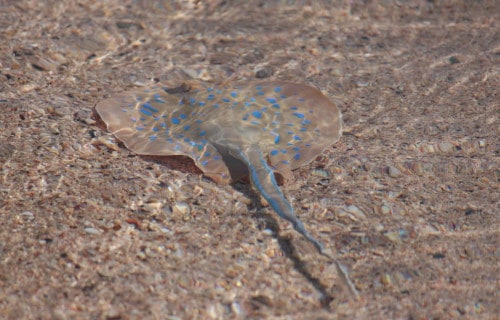
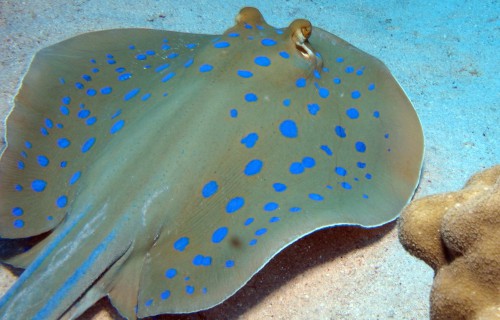
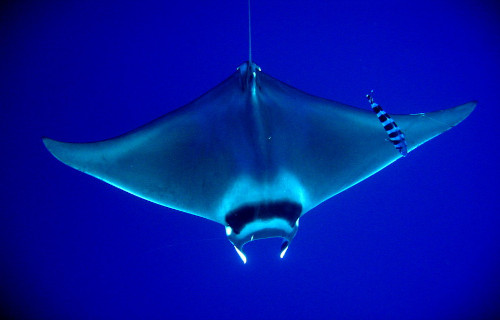
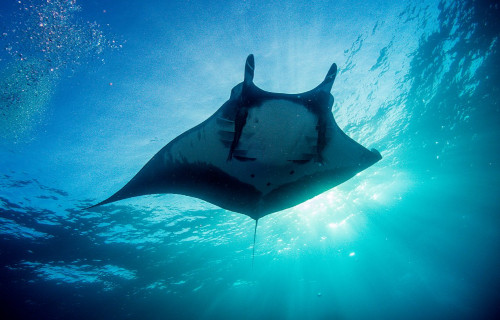

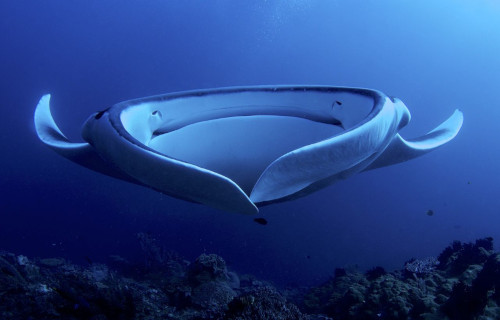
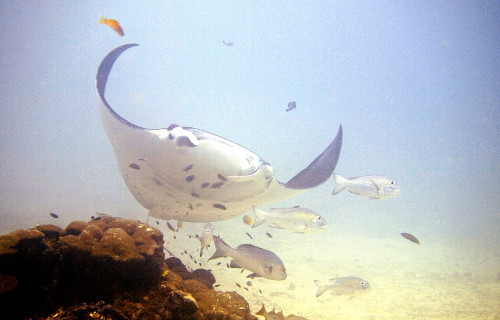
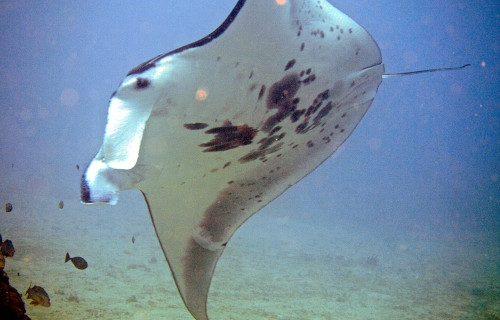
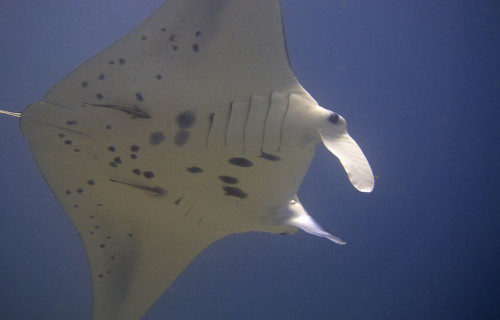
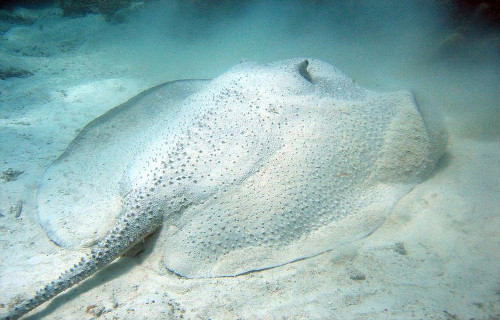
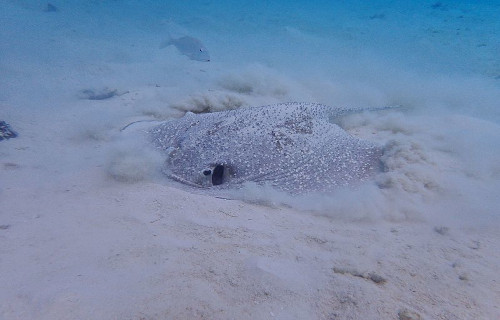
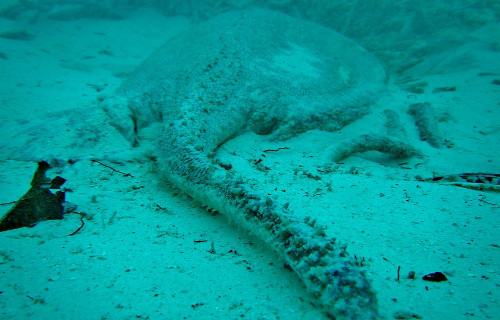









Leave a Reply